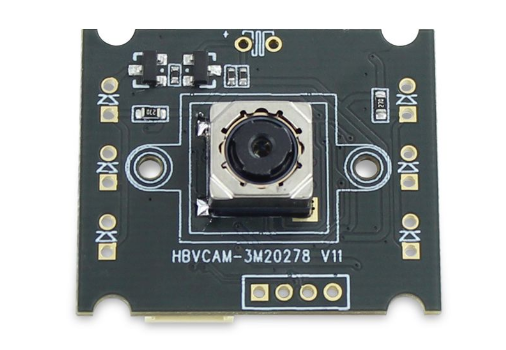USB 2.0 Camera Module: 4 Things You Need to Know
USB 2.0 camera modules are widely used in various applications, ranging from surveillance systems and industrial automation to video conferencing and computer vision. They offer an easy-to-use and cost-effective solution for capturing high-quality images and videos. In this article, we will explore the key things you need to know about USB 2.0 camera modules.
1. Composition of USB 2.0 Camera Module
A USB 2.0 camera module typically includes the following components:
Image sensor:
This is the component that captures the image, it is usually a CCD (charge-coupled device) or CMOS (complementary metal-oxide-semiconductor) sensor.
Lens:
This component focuses the light onto the image sensor, it can be fixed or adjustable.
Image Processor:
This component processes the data from the image sensor and converts it into a digital signal that can be transmitted over USB.
USB controller:
This component manages the communication between the camera module and the host computer over the USB connection.
Power Management Unit:
This component manages the power supply to the camera module and can include a battery or a DC/DC converter.
Mechanical housing:
This component protects the internal components of the camera module and can include a mounting mechanism for attaching the camera module to a host device.
PCB:
The Printed Circuit Board (PCB) is where all the components are mounted, it connects all the components and allows them to communicate with each other.
Please note that the specific components and their composition of a USB 2.0 camera module may vary depending on the manufacturer and the intended application.
HBVCAM OV3640 3MP Auto Focus Fixed Focus Android Linux Camera Module with Free Driver
2. Application of USB 2.0 Camera Module
USB 2.0 camera modules find extensive use in industrial and original equipment manufacturer (OEM) applications. They are commonly employed in machine vision systems for quality control, inspection, and process monitoring. USB 2.0 camera modules also serve as vital components in robotics, medical imaging, surveillance systems, and virtual reality applications.
A USB 2.0 camera module is a versatile device that can be used in a variety of applications. Some common applications include:
Video conferencing:
USB 2.0 camera modules are commonly used in desktop video conferencing systems to provide high-quality video and audio for remote meetings and collaborations.
Surveillance:
USB 2.0 camera modules can be used in surveillance systems to provide real-time video feeds for monitoring and security purposes.
Machine Vision:
USB 2.0 camera modules can be used in industrial and manufacturing settings for tasks such as quality control, inspection, and monitoring of production lines.
Robotics:
USB 2.0 camera modules can be used in robotics applications to provide visual input for navigation, object recognition, and other tasks.
Medical imaging:
USB 2.0 camera modules can be used in medical imaging applications such as endoscopy and microscopy to capture high-resolution images.
Automotive:
USB 2.0 camera modules can be used in automobiles for backup cameras, driver monitoring, and in-car entertainment systems.
Research and Development:
USB 2.0 camera modules can be used in research and development settings to capture images and videos for analysis and experimentation.
Gaming:
USB 2.0 camera modules can be used in gaming applications to provide real-time video feeds for motion detection and facial recognition in gaming.
Please note that USB 2.0 is an older standard and some newer camera modules might use USB 3.0 or even USB 4.0, it would be best to check and compare different options to find a camera module that best meets your needs.
3. Cost-Effectiveness:
USB 2.0 camera modules provide a cost-effective solution for many imaging applications. Compared to other camera interfaces, such as USB 3.0 or Gigabit Ethernet, USB 2.0 modules are generally more affordable. They offer a balance between performance, ease of use, and cost, making them suitable for a wide range of budget-conscious projects.
4. Limitations:
While USB camera modules offer numerous benefits, they have some limitations to consider. The USB 2.0 interface has a lower bandwidth compared to USB 3.0 or other high-speed interfaces, which can impact the maximum resolution and frame rate achievable. Additionally, USB 2.0 camera modules may not be suitable for applications requiring ultra-low latency or extremely high-resolution imaging.
Conclusion
USB 2.0 camera modules provide a convenient and cost-effective solution for capturing high-quality images and videos in various applications. With their plug-and-play functionality, software support, and integration options, they offer flexibility and ease of use. However, it's important to consider the resolution, frame rate, power requirements, and any limitations when selecting a USB 2.0 camera module for your specific project or application.

456
0
0



Comments
All Comments (0)